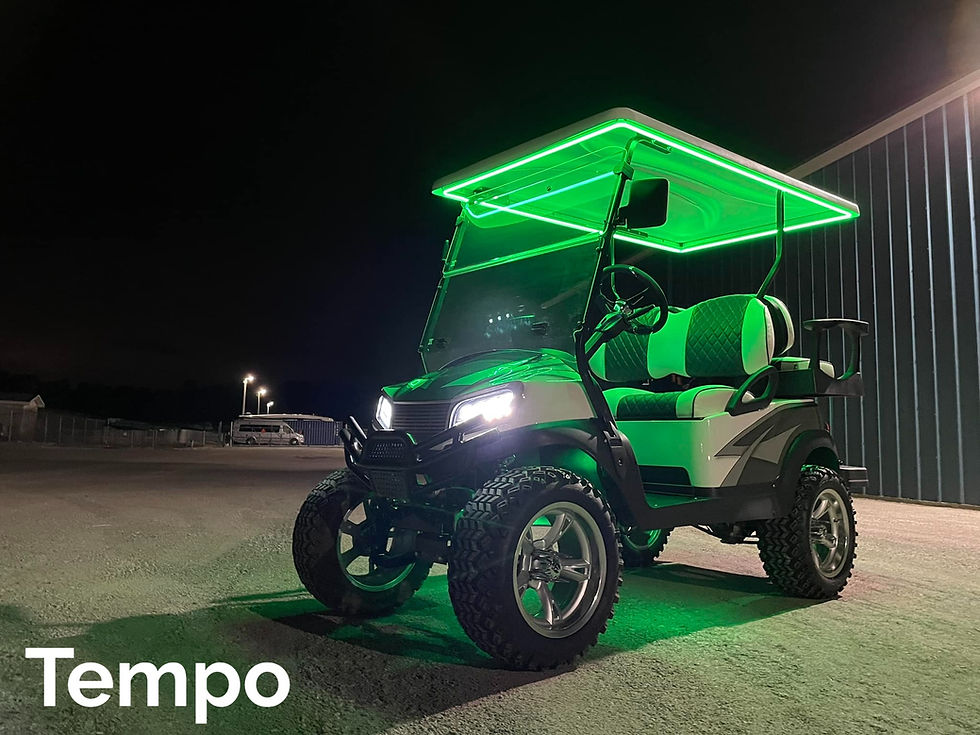As a seasoned golf cart specialist deeply immersed in the fascinating history of Club Car, I am thrilled to take you on an insightful journey through the evolution of this iconic company. From its humble beginnings in 1958, when Orville Homer Landreth pioneered the first golf buggy with a steering wheel, to its status today as a global leader in golf and utility vehicles, Club Car's story is a testament to innovation, perseverance, and a relentless commitment to excellence. Join me as we delve into the remarkable milestones and pivotal moments that have shaped Club Car's trajectory over the decades, embodying a legacy of quality craftsmanship and forward-thinking design.

1958:
In 1958, the seeds of Club Car were sown when Orville Homer Landreth, an innovative mind working with Igloo Products, Inc. in Houston, Texas, introduced the world to the first-ever golf buggy equipped with a steering wheel. This pioneering invention laid the foundation for what would become a hallmark of convenience and efficiency on golf courses worldwide.
1960:
Two years later, in 1960, the journey of Club Car took a significant turn when Orville Landreth parted ways with Igloo Products, taking with him the tooling and rights to the golf cart he had designed. This marked the beginning of Club Car's independent venture, setting the stage for its future as a leader in the golf cart industry.
1962:
In 1962, Club Car found its permanent home when Bill Stevens, Sr. acquired Landreth Machine and relocated it to Augusta, Georgia. With this move, Club Car officially commenced production, positioning itself as a reliable force in the golf cart market with a commitment to quality and innovation.
1973:
The year 1973 witnessed a pivotal transition for Club Car as it was acquired by the Johns Manville Company. This acquisition opened new avenues for growth and expansion, propelling Club Car into a new era of development and advancement.

1975:
By 1975, Club Car had solidified its reputation as a trailblazer in the industry with the introduction of the four-wheeled cart, a significant departure from its original three-wheel design. This innovation showcased Club Car's commitment to evolving technology and meeting the changing needs of its clientele.
1978:
In 1978, Club Car underwent another change in ownership when Johns Manville sold the company to CC Manufacturing. This transition marked a new chapter for Club Car, infused with fresh perspectives and strategies to further elevate its position in the market.
1982:
The year 1982 heralded a period of technological advancement for Club Car with the introduction of the new DS cart, featuring a 48-volt electric motor. This innovation not only enhanced the performance of Club Car vehicles but also underscored the company's dedication to pushing the boundaries of innovation.

1985:
By 1985, Club Car had expanded its product line with the introduction of the Carryall II, a versatile utility vehicle designed for commercial use. This addition diversified Club Car's offerings, catering to a broader range of customers with varied needs and preferences.
1990-1999:
Throughout the 1990s, Club Car continued to innovate and adapt to changing market demands. The decade saw the introduction of the FE290, the first overhead valve engine, in 1992, as well as the creation of the Custom Solutions department, emphasizing Club Car's commitment to tailor-made solutions for its clientele.
2000-2009:
The turn of the millennium marked a period of significant milestones for Club Car, including the production of its 1,000,000th car and the launch of groundbreaking products like the Precedent i2 and the Carryall 295. These innovations underscored Club Car's commitment to excellence and solidified its position as an industry leader.

2010-PRESENT:
In the current decade, Club Car has continued to innovate and evolve, introducing connected technology in 2010 and unveiling the Onward series in 2017. These developments reflect Club Car's unwavering dedication to meeting the evolving needs of its customers while maintaining its reputation for quality and reliability.

In conclusion, the journey of Club Car is a testament to the power of innovation and adaptability in the face of changing times. From its inception in 1958 to its present-day status as a global leader in golf and utility vehicles, Club Car has remained steadfast in its commitment to quality, performance, and customer satisfaction. As a dedicated golf cart specialist, I am proud to have recounted the rich history of Club Car, a story defined by ingenuity, resilience, and a relentless pursuit of excellence. As we look to the future, one thing remains certain: Club Car will continue to drive forward, setting new standards of innovation and service in the industry for years to come.


Comentarios